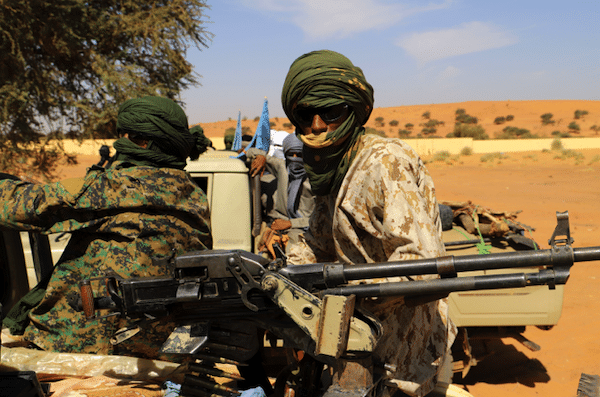Niger is one of the countries located in the Sahel region, perhaps the most historically exploited area in the world. It is the southern fringe of the Sahara, which divides the Maghreb from sub-Saharan Africa. In Arabic it means “West” (place of the setting sun). It concentrates a huge amount of strategic resources overexploited for centuries, a catalog of destabilizations and chaos due to the rise of foreign military interventions, coups d’état and terrorism in the last decades and, therefore, cradle of several of the greatest anti-colonial and pan-African leaders of the 20th century.
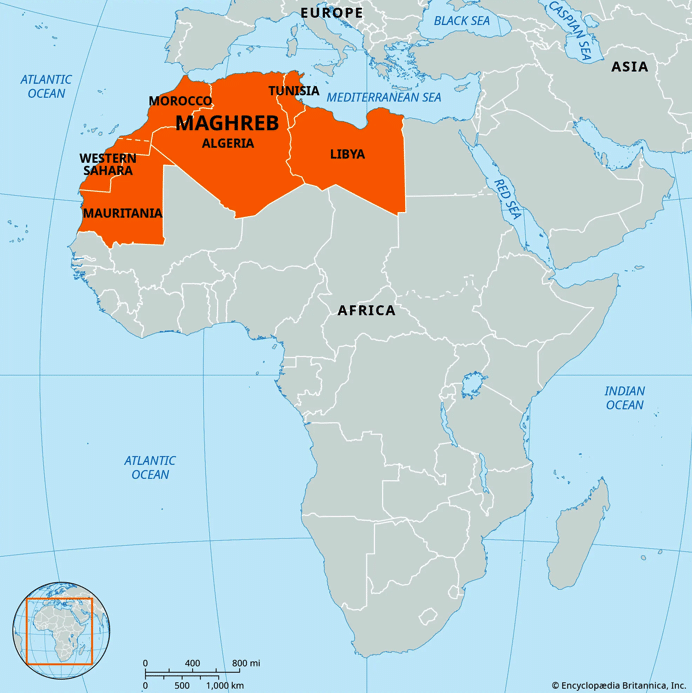
The Sahel is a territorial band, with a length of 5,400 kilometers, that joins the Atlantic coast of Mauritania and Senegal with the Red Sea, on the shores of Sudan and Eritrea; in the middle, from east to west, are Ethiopia, Chad, Niger, northern Nigeria, Mali and Burkina Faso.
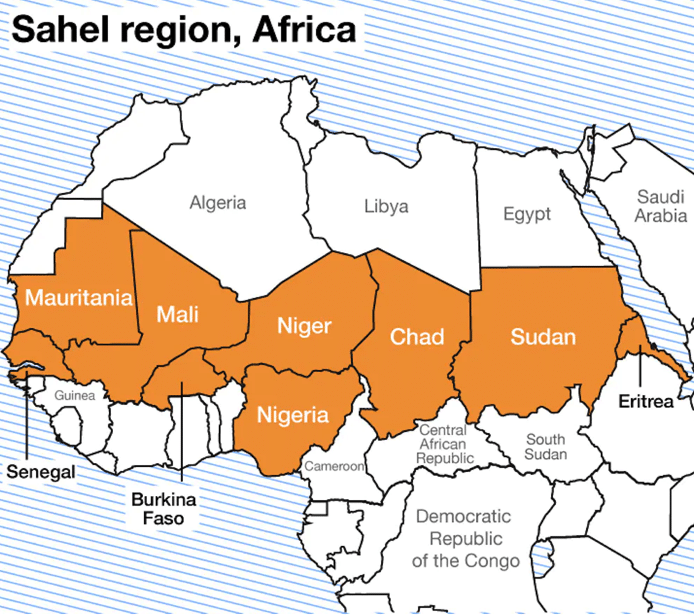
In its western segment, the international slave trade originated in the 16th century: the triangular trade—well described by the Trinidadian politician and historian Eric Williams—based on the export of quincallero products from Europe to the Sahel, where they were exchanged for African slaves to be transported to America, where they arrived to produce and extract the goods that were then traded in European markets.
The mercantile system, from which modern capitalism emerged, would not have existed without West Africans becoming the main human commodity in this triangulation.The Sahel was also the scene of trans-Saharan activity, connecting different routes to all African latitudes, which lasted longer than the triangular one.
After the Berlin Conference (1884-85), in which Spain, Italy, France, the United Kingdom, Germany, Portugal and Belgium arbitrarily divided and divided up the entire continent as colonies, with the exception of Ethiopia—formerly called Abyssinia—and Liberia, Africa’s role as a source of raw materials and slave labor in the international division of labor deepened, and with it the history of rebellions, revolutions, putschs, assassinations, secessions and liberation movements in response to, and in line with, the colonial barbarism experienced for centuries.
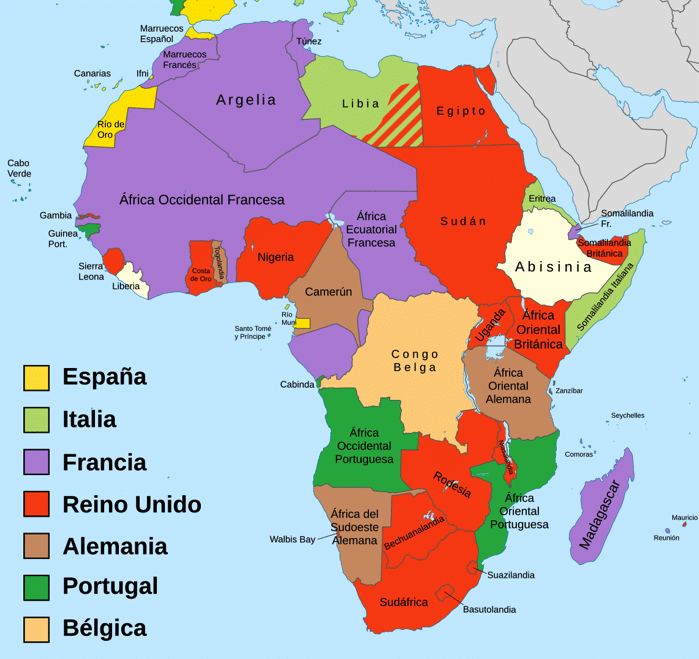
Map of the colonial partition of Africa by 1914 (Photo: Wikimedia Commons)
France managed to keep a large part of the Sahel, where it enjoyed the mineral, energy, natural and human resources of the region and formed French West Africa ( FWA). Among its possessions were Mauritania, Senegal, French Sudan (now Mali), French Guinea (now Guinea-Conakry), Ivory Coast, Upper Volta (now Burkina Faso), Dahomey (now Benin) and Niger. The colonial benefit was marked by the diversity of natural wealth, the trans-Saharan trade transit areas—not only the transatlantic but also the trans-Saharan slave route—and the mineral, oil and gas deposits.
To the south of the strip, in the area of the Great Lakes, there is also one of the largest water reserves in the world, as well as iron, salt, diamonds, copper, coal and uranium. The interests of French capital around the Sahel gave geopolitical and geostrategic importance to the region. The mandate over Algeria, Madagascar, Tunisia, Togo, part of Morocco and Cameroon, and the current Chad, Central African Republic, Congo and Gabon—together called French Equatorial Africa—granted a profit margin that, after the African independence processes, would be preserved in the second half of the 20th century until today under neocolonial mechanisms and instruments.
From the 1960s onwards, liberation movements emerged in the Sahel, following the outbreak of the Algerian war in 1954. That year France finished losing its 14 colonies. It was a time when expressions and leaderships in favor of national sovereignty were emerging from all African countries, the dawn of Pan-Africanism with the Ghanaian Kwame Nkrumah as its main spokesman and articulator. In the French possessions were born Modibo Keïta, former president of Mali (1960-1968), and Thomas Sankara, in Upper Volta, who led a political revolution that led to rename the country—and the national project—as Burkina Faso, which today represent the ideals and feelings of African liberation and independence.
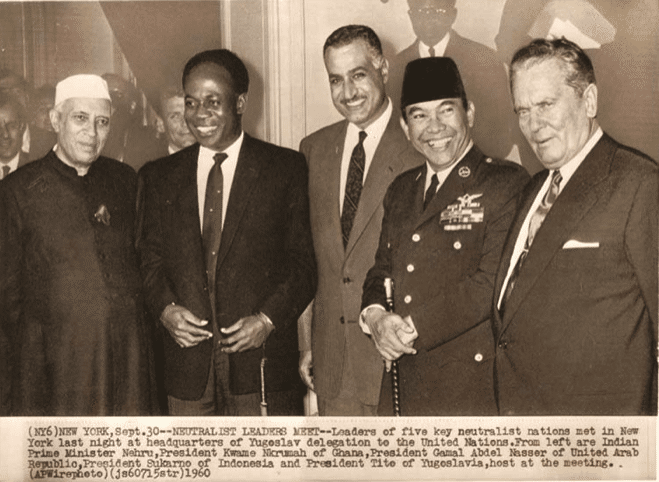
From left to right: Nehru, Nkrumah, Nasser, Sukarno, and Tito (Photo: Archive)
The rise of these leaders and their political processes was marked by the geopolitical beacon of the Bandung Conference in 1955, which gave birth to the Non-Aligned Movement (NAM) of which Nkrumah, representing Ghana and in favor of orienting African wills towards a common destiny, helped to organize and was one of its most important promoters. The struggles in Asia also share the same context of Africa’s destiny during the 1950s, 1960s and 1970s; some were references for others.
Subsequently, after a series of U.S. and European operations to depose and undermine anti-colonial and pro-independence leaderships in Africa, install governments in favor of the foreign policy and capitals of North America and Europe, insert themselves into African socio-economic dynamics and plunder the continent’s resources through neocolonial practices, the current situation in the Sahel is dominated by the geopolitical and geostrategic agenda of various global powers.
To provide just one example of the colonial relationship, at the moment quite viral for demonstration’s sake: Niger uranium produces 40% of France’s electricity through nuclear power, while 89% of the Nigerien population has no electricity service. In 2014, one in three light bulbs in France was powered by uranium from this source. This country is the world’s sixth largest producer of the aforementioned mineral; it is extracted near the twin mining towns of Arlit and Akokan, 900 kilometers northeast of the capital Niamey, on the southern border of the Sahara Desert and in the western range of the Aïr Mountains.
The asymmetry in the correlation between France and Niger is a characteristic of neocolonial dynamics: development for them, anti-development and overexploitation for the former. This reason is the fundamental driver of the latest political and geopolitical events in the Sahel countries, a strip where the rate of coups d’état has risen: since 2020 six countries have had forced changes of government, where military juntas and transitional administrations have been established with anti-colonial and pan-African visions and leaderships with experience in the fight against terrorism, the other nodal factor inserted in the brokerage of interests surrounding the situation in Niger and other neighboring countries that support the CNSP.
According to the latest Global Terrorism Index report from the Institute for Economics and Peace:
The Sahel is the region of the world most affected by terrorism, showing a marked deterioration in 2022 despite improvements in Nigeria and Niger. Both Burkina Faso and Mali showed substantial increases in terrorism deaths with an increase of 50% and 56%, i.e. 1,135 and 944 deaths, respectively. In addition, four of the ten Sahel countries are among the ten worst performers in the Global Terrorism Index (GTI). Neighboring Sahel states also experienced an increase in terrorist activity in 2022, with Benin and Togo counting more than ten deaths for the first time (p. 13).
Specifically, jihadist terrorism has a particular prominence in this scenario and is therefore connected to contested political and geopolitical factors. The destruction it has left in its wake has grown, and it has a solid foundation by history.
THE LIBYAN ORIGIN: THE POST-QADHAFI ERA
With the fall—and martyrdom—of Colonel Muammar al-Qadhafi in 2011, two tectonic movements of international scope occurred, of special historical significance for the Sahel: 1) the end of the Libya-European Union migration agreement; and 2) the mobilization of the groups that were in the coup against Libya to their countries of origin—with the Azawad, the Tuareg region where Timbuktu is located, north of Mali, one of the epicenters—which led to the emergence of a network of networks of organs affiliated with jihadist terrorism along the routes of the strip.
Following the intervention of the North Atlantic Treaty Organization (NATO) in Libya, there has been a situation of fragmented governance, in a context of erosion of state authority, a country turned into a slave market and smuggling of arms, drugs and strategic resources in the open,in which Niger has become one of the main points of passage for trafficking networks, located at one of the vertices of the Mediterranean Sea, with routes to Italy and Lampedusa Island offshore, and inland to all regions of the African continent.
The post-Qadhafi Libyan security and stability crisis produced a loss of border control that broke de facto the agreement between Libya and the EU—through Italy—launched on October 5, 2010. Allegedly 5 billion Euros were invested to curb the “unwelcome” migratory flow, with successful results resulting from a collaboration that was suddenly cut off in 2011 and initiated the era of widespread jihadist terrorism in many parts of Africa, but which also managed to sneak and settle in the main countries where the European capital elite are based, including the UK, Germany and France. The effects of jihadist migration to Europe have been more than palpable over the last decade.
At present, Europeans—with Italy at the head, ex-metropolis—are still debating what is the best project to stop illegal migration from Libya, while the country continues to live the aftermath of the Ottoman intervention at the Mediterranean entrance to Africa.
Inwards, one of the routes of illicit trade and terrorism crosses the different national territories of the Sahel, through which Niger appears as an obligatory passage on the way to Mali, Burkina Faso and Nigeria, from the south to the north. New branches of jihadist terrorism emerged within this area after Al-Qaeda’s involvement bore its fruits of destruction and chaos in 2011. Al-Qaeda’s operations in Libya officially began in 2007, as one of its leaders, Ayman al-Zawahiri, announced at the time.Libyan rebel commander Abdel-Hakim al-Hasidi (Abdelhakim Belhaj) admitted that his fighters had links to Al-Qaeda. The jihadists who fought in Iraq were on the front lines against the Qadhafi government, just as they were in Afghanistan in the 1980s and in the Algerian civil war in the 1990s; many of them were also in the Sahara and the Sahel.
The armed conflicts provoked by terrorist groups along the entire strip opened up larger markets for the smuggling and trafficking of arms, drugs, slaves and raw materials, and facilitated the rise of the illicit economy around the energy and mineral enclaves of the area, while mass displacement increased and a trail of chaotic destruction followed in their wake.
Evidence and investigations confirm that Al-Qaeda and Daesh (Islamic State) currently have branches and cells in the Sahel, respectively called Jama’at Nusrat al-Islam wal-Muslimin (JNIM) and Islamic State in the Greater Sahara (ISGS), where they have committed war crimes and crimes against humanity. Extremist organizations such as Ansar Al-Din (Mali) and Boko Haram (Nigeria), also directly and indirectly related to the aforementioned, have taken advantage of the circumstances to expand their activities, turning the region into the epicenter of African jihadism, and have expanded government instability and, therefore, the security crisis in the Sahel, as indicated in the aforementioned Global Terrorism Index in its 2023 edition.
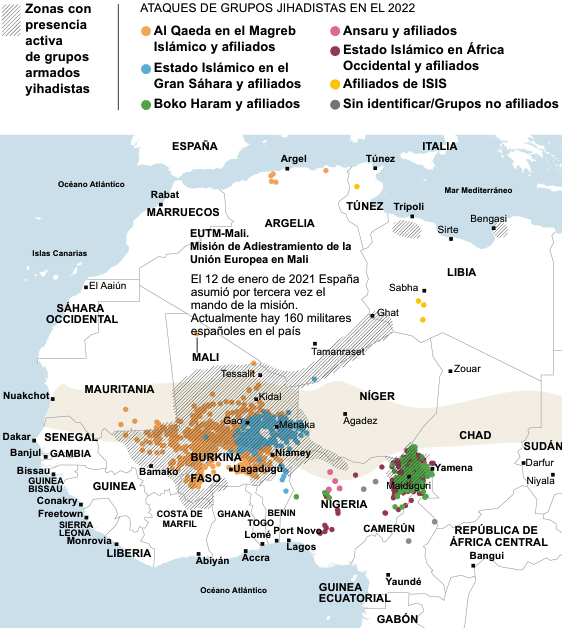
Attacks by jihadist groups in 2022 in the Sahel (Photo: La Vanguardia)
The situation in Burkina Faso and Mali was critical in terms of security, with massacres and atrocious crimes in public roads of civilians on a daily basis, under the consolidation of the operations of jihadist groups in the central Sahel, with a tendency to expand in Togo, Benin, Ghana and Ivory Coast. The germ of terror grew in the bowels of the Sahel, and the combat of the state armies against its forces has generated a chain reaction on the part of the military commanders responsible for neutralizing and defeating the enemy.
President Ibrahim Traoré, captain of the Burkinabe army, currently rules in Burkina Faso, a personality who has supported Niger since the first minute of the coup against the surrounding foreign powers. He came to power on October 6, 2022 after the overthrow of Paul-Henri Sandaogo Damiba. In his speech to the Russia-Africa Summit at the end of last July he referred to the Slavic federation as “family” and accused other African presidents of being “puppets of imperialism”.
“A slave that does not rebel does not deserve pity. The AU must stop condemning Africans who decide to fight against their own puppet regimes of the West" – Ibrahim Traore (Burkina Faso President) pic.twitter.com/sWP2zGf0Dg
— African Hub (@AfricanHub_) July 28, 2023
Colonel Assimi Goita took power after two coups in 2021 in Mali. The criminal violence, of jihadist invoice, is added to the territorial conflict, stilled but unresolved, of the Tuareg rebellion at the beginning of the 2010s.The complex scenario was responded to by the transitional government led by Goita, who is negatively propagandized as “Putin’s strongman in Africa” due to his anti-colonial animosity towards the United States and France.In the same vein, and returning to the Niger case: General Tchiani has been criticizing for months the security policy of the Bazoum administration in the fight against terrorist jihadism, as French troops in Niger were multiplying without any positive effect, except to provide security for European companies exploiting Niger’s uranium and gold.
The relocation of the French forces of the anti-terrorist operation “Burkhane”—following the failure of the Serval Operation 2013— after their departure from Mali to Niger as a result of the failure of their objectives, and by sovereign order of the Malian government to expel the foreign troops, broke the camel’s back and General Tchiani together with other senior officers of the Nigerien military corps took the measure of the coup in a country plunged into the tyranny of hunger, violence and neocolonial dependence.
In the same vein, and to return to the Niger case: General Tchiani had been criticizing for months the security policy of the Bazoum administration in the fight against terrorist jihadism, as French troops in Niger were multiplying without any positive effect, except to provide security for European companies exploiting Niger’s uranium and gold.
Tchiani said:
We often tracked down the terrorists, but when we asked to rush to kill them, former President Bazoum told us to ask the French forces for permission first. Our soldiers were falling on the fronts and France did nothing.
From this statement it is clear, with a minimum analysis of the facts, and bearing in mind the historical thread of the current scenario in West Africa, that the putchs in the western fringe of the Sahel are the response of the military commanders of Burkina Faso, Mali, Guinea, and now Niger, to a combination of the increase in jihadist terrorist activities, the French military collapse and European initiatives in general and the historical misery of their peoples: the accumulation of effects of the post-Qadhafi era in the region. And, on the other hand, the discourse of Sahelian officials is in tune with the old Pan-African spirit of the mid-20th century—the position of Burkina Faso stands out, more inclined towards the Pan-African proposal over the other governments, currently more attached to pragmatism in terms of international alliances -, but updated to the context of contemporary dispute in the geopolitical and geo-economic field in Africa, where the United States, China and Russia have a preponderant role.
Translation by Internationalist 360°
"If anyone dares invade Niger due to the Military takeover, coup d'état, we will declare it as a war against them (invaders) and we will send our military to defend the country (Niger)" – Mamady Doumbouya of Guinea (President of Guinea) pic.twitter.com/w07YVtnKGM
— African Hub (@AfricanHub_) August 1, 2023

